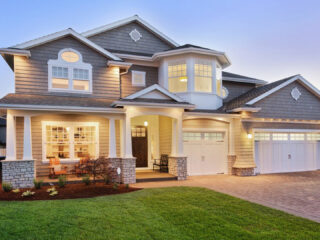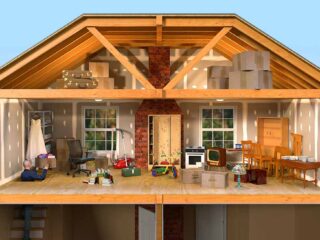Growers in chilly areas that desire a longer growing season may benefit greatly from using greenhouses. With a greenhouse, your crops won’t have to worry about the damaging effects of the elements or pests. The conventional “hoop house” greenhouse construction has been replaced by newer greenhouse designs, which have several advantages. Traditional greenhouses leaked and needed regular upkeep, but today’s models use far less energy. They are easier on the wallet and the environment.
The size and composition of your greenhouse’s components will determine how much it will cost to power. For plants to thrive in commercial greenhouses all year long, they need additional heating. To heat your greenhouse with electricity, you’ll need to account for the price of additional wiring, an electrician, and a larger monthly energy bill.
The expense of cooling a greenhouse is often disregarded despite its potential magnitude. Fans or misters used to spray water may be seen in many commercial greenhouses. A greenhouse is a big investment, so it’s important to keep a few things in mind before you go out and start browsing. There are a variety of greenhouse designs, each with its own set of benefits.
You may have to adjust your land, depending on the greenhouse design you choose. Some greenhouses, for instance, are meant to function independently of a home’s structure and roof. Other greenhouses are meant to be mounted to the top of a structure; if you go this route, be sure the greenhouse is well-built.
Remember a few things to remember if you’re in the market for a new greenhouse. The pros of various greenhouse layouts will vary. You may have to adjust your land, depending on the greenhouse design you choose. Some greenhouses, for instance, are meant to function independently of a home’s structure and roof.
How To Buy A Greenhouse
There is a universal rookie blunder made by greenhouse entrepreneurs. They are quite selective and will only eat plants that catch their eye. Initially, this seemingly random assortment will seem to be a lot of fun and thrilling. Okay, so now what? So, the first step is to figure out what kind of microclimate you can create for your plants.
Then, choose plant species that thrive in that particular setting. The ability to recognize common plant problems and find solutions may be very useful. While some plants need warm evening temperatures, others do better in cool air. Some people do better with strong lighting, while others like dappled sunlight. Either think about which plants might work best in your greenhouse or use that information to guide your greenhouse purchase.
Check the greenhouse’s assembly specifications before making a purchase. Commonly, mini greenhouseare available for purchase as DIY kits. They come unassembled as flat panels that need to be put together. On average, assembling a greenhouse kit will take four or five hours. Still, it’s smarter to err on the side of caution and dedicate a weekend to finishing the task.
The most popular sizes are six to eight feet and eight to ten feet. These may be “small,” but they provide a generous amount of space for your plants. The soil on one side of the walkway is often reserved for low-growing plants. The other wall is where you’ll find the bookcases and the vertical gardens. Suppliers of greenhouses often advise purchasing a size greater than necessary.

 Navigating the World of CFD Brokers: Top Tips for Secure and Profitable Trading
Navigating the World of CFD Brokers: Top Tips for Secure and Profitable Trading  Unveiling the Best Legal Steroid Alternatives: A Comprehensive Guide to Safe and Effective Performance Enhancement
Unveiling the Best Legal Steroid Alternatives: A Comprehensive Guide to Safe and Effective Performance Enhancement  Sacramento’s Pro Junk Haulers: Here to Help
Sacramento’s Pro Junk Haulers: Here to Help  Navigating Your Path to Purchase: A Step-by-Step Guide on Buying Xanax Safely
Navigating Your Path to Purchase: A Step-by-Step Guide on Buying Xanax Safely  Understanding the Safety and Success of Breast Augmentation in Miami
Understanding the Safety and Success of Breast Augmentation in Miami  Unveiling the Market Leaders: An In-depth Look at Cincinnati Pool Demolition Companies
Unveiling the Market Leaders: An In-depth Look at Cincinnati Pool Demolition Companies 





